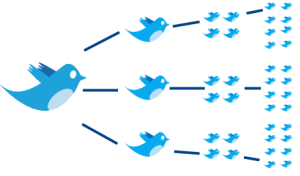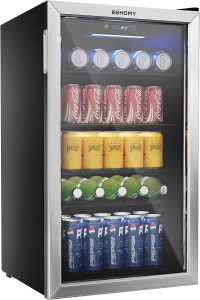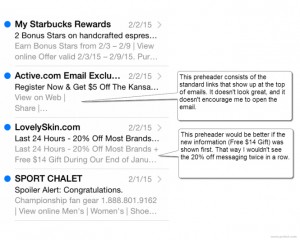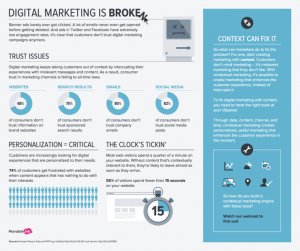Contributor Paul Stanton explains streaming data analytics, a new big data strategy that’s gaining traction among marketers.

Big data strategies support customer segmentation, user trends, pricing analysis, campaign results and other critical marketing needs. The hot big data strategy right now? Streaming analytics.
Streaming data analytics is a big data strategy that shifts the focus from systems of record (e.g., “what were last quarter’s sales of Product X?”) to real-time insight and action (e.g., “what is an individual customer likely to buy, and what form of engagement will best influence their behavior?”). Streaming analytics has emerged as a simpler, lower-risk approach, with immediate and easily measured business results. It is also the foundation of real-time customer engagement, an increasingly strategic focus for many businesses.
Let’s dive in to explore this important topic.
Understanding streaming analytics
Streaming analytics combines events from multiple sources, including online transactions, social media posts, web browsing and wireless calls. Where most big data strategies build a comprehensive data store, streaming analytics focuses on specific events. Events are recognized, formatted and delivered to systems for processing.
The event engine combines real-time events with customer profile data, such as customer name and contact methods for service delivery. The ability to create scenarios and to adapt or update scenarios and scale to manage hundreds of scenarios are key challenges in streaming analytics.

Business is no longer simply selling a seat…
Streaming analytics adds value through customer engagement, improved revenue, cross-selling and brand loyalty. Customer engagement can also be used for improving customer service and lowering customer support costs, engaging customers throughout their digital “journey.” Each step is shaped by real-time events and interaction. With a branded phone application, we can look forward to a travel experience that includes:
- Being informed in real time of flight schedule changes. On the day of the flight, traffic patterns are used to recommend departure times and routes to the airport.
- Parking options are presented with directions.
- Travelers who miss the flight check-in are placed on an outbound call queue for rebooking.
- Operations is notified when check-in kiosks stop functioning.
- Travelers are updated when baggage is loaded. In the event that baggage misses a connection, the traveler is notified and instructions for delivery solicited without a visit to “customer service.”
- On-ground maintenance is expedited, based on in-flight maintenance alerts provided to maintenance.
- On arrival, travelers are provided connecting flight information and directions to Uber pickup locations and other services.

The metaphor of a journey applies to sports and other event-oriented experiences, too. Customer engagement goes through a regular cycle of planning, purchasing and experiencing and returns to anticipation of the next event.
- Sports marketing begins with transparent social media access to players and coaches.
- Seats are marketed to fans and groups based on customer segmentation, with special offers triggered based on supply and personalized offers for special dates (birthdays) or favorite teams and players.
- Traffic suggestions and parking assistance are fan favorites.
- In-seat food ordering and food service are becoming popular.
- In-game online gaming is also growing in importance, with winners announced and prizes awarded.
- During the game, fans appreciate being able to replay favorite plays on demand.
- Post-game directions to the exit and suggested routes home are also appreciated.

Streaming analytics for finance, insurance, retail, service providers and others
Streaming analytics was pioneered in financial services and is widely used to detect and prevent transactional fraud. A customer who makes a debit withdrawal or purchase in one city is flagged immediately if a purchase or withdrawal is initiated in a distant location.
Wireless service providers use streaming analytics to recognize changes in customer usage and drive focused campaigns to maximize renewals of contracts and prepaid plans. Streaming analytics is also being adopted to identify patterns that lead to device failure on networks or the Internet of Things (IOT). Patterns that lead to device failure can be recognized, and proactive steps can be taken to maximize device and network uptime.
The opportunities to improve customer engagement with streaming analytics are endless.
Conclusions and next steps
The capabilities that we’ve explored here are practical and affordable, and lower risk than many big data strategies. I was recently involved in a project where a streaming analytics system was piloted for a global network service provider. A pilot system supported over 1 million users, with a dozen scenarios, and was implemented in less than a month on a single Amazon Web Services machine. Results were immediate with improved contract renewals. The pilot was immediately expanded and has gone into production.
The Gartner Group recognizes the following vendors as leaders in Streaming Analytics: Apache Foundation, EVAM, Microsoft, Oracle, SAP, SAS, Software AG and Tibco Software.
Some opinions expressed in this article may be those of a guest author and not necessarily Marketing Land. Staff authors are listed here.
Marketing Land – Internet Marketing News, Strategies & Tips
(110)
Report Post









